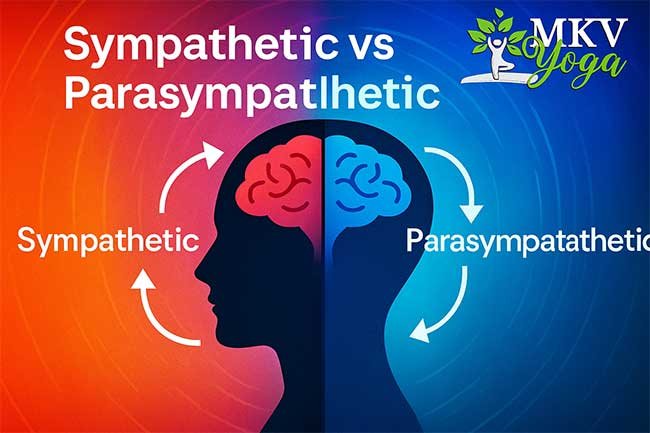Table of Contents
Sympathetic and Parasympathetic Nervous System: Key Differences & Functions
The human nervous system is a complex and intelligent network that controls everything from our heartbeat to our emotional responses. At the core of this system lies the autonomic nervous system (ANS), which functions without conscious control. It is further divided into two main branches — the sympathetic nervous system and the parasympathetic nervous system. Together, they work in harmony to maintain balance (homeostasis) in the body.
What is the Sympathetic Nervous System?
The sympathetic nervous system (SNS) prepares the body to deal with stressful situations. It triggers the “fight or flight” response, mobilizing the body’s energy to confront or flee threats.
Key Functions:
- Increases heart rate and blood pressure
- Dilates pupils
- Inhibits digestion
- Releases adrenaline
- Redirects blood flow to muscles
This response is crucial during emergencies or intense physical activity.
What is the Parasympathetic Nervous System?
The parasympathetic nervous system (PNS) is responsible for the “rest and digest” functions. It promotes relaxation and recovery after stressful events.
Key Functions:
- Slows heart rate
- Stimulates digestion
- Encourages deep breathing
- Promotes glandular activity
- Facilitates sleep and repair
The PNS helps conserve energy and supports long-term health and well-being.
Sympathetic vs Parasympathetic: A Comparison
| Feature | Sympathetic | Parasympathetic |
|---|---|---|
| Response | Fight or Flight | Rest and Digest |
| Heart Rate | Increases | Decreases |
| Digestion | Inhibits | Stimulates |
| Breathing | Rapid | Slow and Deep |
| Pupils | Dilated | Constricted |
| Hormones | Adrenaline, Cortisol | Acetylcholine |
Why Balance is Important
An overactive sympathetic system can lead to chronic stress, anxiety, digestive issues, and even heart problems. Activating the parasympathetic system through calming practices helps bring the body back to balance, reducing inflammation and promoting healing.
How to Support Nervous System Health
To calm the sympathetic system and boost parasympathetic activity:
- Practice deep breathing exercises
- Do yoga or meditation
- Get enough quality sleep
- Spend time in nature
- Avoid excessive caffeine and stimulants
- Eat balanced, sattvic food
The sympathetic and parasympathetic nervous systems are two sides of the same coin. Understanding how they function and affect your body can empower you to live a healthier, more balanced life. Embracing practices that support your parasympathetic nervous system can help reduce stress and improve overall well-being.
You may also like to read –
Ashtanga Yoga – Yoga For Developing & Harmonising The Mind
Yama and Niyama – The Ethical Guidelines of Patanjali’s Ashtanga Yoga

